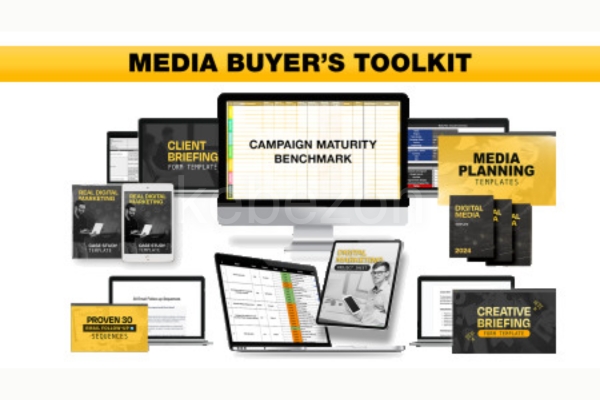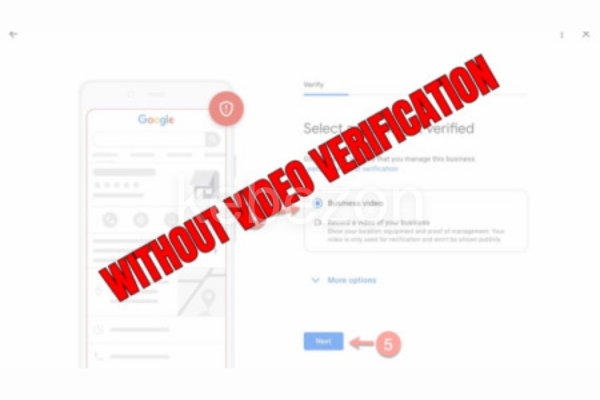-
×
 MageAI Unlimited with Satish Gaire
1 × 5,00 $
MageAI Unlimited with Satish Gaire
1 × 5,00 $ -
×
 Media Buyer’s Toolkit
1 × 5,00 $
Media Buyer’s Toolkit
1 × 5,00 $ -
×
 THE FULL PACKAGE! 8 COURSES with InTheMoneyStocks
1 × 443,00 $
THE FULL PACKAGE! 8 COURSES with InTheMoneyStocks
1 × 443,00 $ -
×
 Perfect Image Creator with Matthew Rhodes
1 × 5,00 $
Perfect Image Creator with Matthew Rhodes
1 × 5,00 $ -
×
 Dramatic Rocky Beach Composite Stock Assets with Clinton Lofthouse
1 × 8,00 $
Dramatic Rocky Beach Composite Stock Assets with Clinton Lofthouse
1 × 8,00 $ -
×
 Atlas Forex Trading Course
1 × 5,00 $
Atlas Forex Trading Course
1 × 5,00 $
Negotiation Strategies for BREAKTHROUGH TCO By Purchasing Advantage
46,00 $
SKU: KEB. 44273DkVYr0M4
Category: Business
Tags: Negotiation Strategies for BREAKTHROUGH TCO, Purchasing Advantage
Download Negotiation Strategies for BREAKTHROUGH TCO By Purchasing Advantage, check content proof here:
Negotiation Strategies for Breakthrough Total Cost of Ownership (TCO) by Purchasing Advantage
The pursuit of revolutionary Total Cost of Ownership (TCO) reductions in the constantly changing procurement landscape is like negotiating a challenging maze. Significant cost savings and improved supplier relationships can result from the opportunities and challenges that each turn brings. Purchasing managers need to take a comprehensive approach that considers all related expenses in addition to the purchase price if they want to get more out of their negotiating tactics.
When properly implemented, this strategy can turn procurement from a tactical task into a strategic engine that propels long-term expansion and encourages creativity throughout the company. We’ll examine crucial negotiation techniques in this post that can help procurement teams attain revolutionary TCO reductions, while also emphasizing the importance of building lasting partnerships with suppliers.
Understanding TCO
To embark on a successful journey towards TCO reductions, procurement professionals first need to understand what TCO really entails. The TCO model breaks down the various expenditures involved in acquiring goods or services, presenting a comprehensive picture that includes:
- Purchase Price: The initial cost to acquire the item or service.
- Administrative Costs: Expenses related to managing the purchasing process, such as time spent on negotiations and contract management.
- Risk Costs: Potential losses associated with supplier reliability and market fluctuations.
- Maintenance Costs: Ongoing expenses for keeping the product or service operational.
- Disposal Costs: Costs incurred at the end of a product’s life cycle.
Purchasing teams can negotiate with a nuanced understanding of value by looking at procurement through this multifaceted lens. This enables them to advocate for proposals that go beyond price alone. This comprehensive viewpoint ensures that all pertinent costs are considered during negotiations and provides a strong basis for informed discussions.
In actuality, this can entail looking at supplier performance data or examining past purchasing trends. For example, this information can be crucial in negotiations if a specific supplier has a history of concealed risks that result in unforeseen maintenance expenses. A more informed conversation with the supplier and increased negotiation value can result from knowing how these costs relate to one another.
Should Cost Analysis
A robust way to bolster negotiation stances is through Should Cost Analysis (SCA). This strategy enables procurement professionals to create a well-substantiated baseline for what products or services should reasonably cost based on factual data and industry benchmarks.
- Setting a Baseline: Procurement teams can establish a fair price free of arbitrary markups by using cost breakdowns based on past spending in conjunction with competitive pricing analyses.
- Finding Outliers: Teams can identify disparities in pricing or sourcing tactics by using SCA. This identification challenges suppliers to reevaluate their pricing structures by providing them with tangible data insights that strengthen negotiations.
- Boosting Negotiation Position: Equipped with this understanding, procurement specialists can push for prices that better reflect market conditions, encouraging openness and confidence in talks.
For instance, a company negotiating a contract for maintenance services could utilize an SCA to pinpoint the market rate for labor and materials. By showcasing this data during negotiations, they create an environment that encourages fair dialogue and paves the way for favorable terms.
Leveraging Competition
In the marketplace, competition can be a powerful catalyst for ***ter pricing and favorable terms. One of the most effective strategies for achieving this is through competitive bidding. This approach involves engaging multiple suppliers and creating a sense of urgency for them to present their best offers.
- Creating Urgency: By letting suppliers know that you are weighing several options, you can encourage competition, which frequently results in better incentives and pricing.
- Promoting Innovation: Businesses may find creative offers or service improvements that non-competitive negotiations might miss when multiple suppliers compete for a contract.
- Long-Term Relationships: Although competition is necessary, building relationships with suppliers even during this phase can result in more advantageous negotiations because they might be prepared to go above and beyond to win or keep your business.
For example, when a company needs to procure office supplies, they can reach out to three suppliers, requesting competitive bids. Not only does this process lead to lower prices due to competition, but it also may yield unique offerings, such as sustainable product options that align with the company’s values.
Comparative Advantage of Competitive Bidding
| Supplier | Bid Amount | Unique Offering |
| Supplier A | $1,000 | Free delivery |
| Supplier B | $950 | Eco-friendly products |
| Supplier C | $1,050 | Customized solutions |
In this scenario, Suppliers A and B both have compelling offers illustrating how competitive bidding can yield diverse options beyond price alone.
Bundling Requests
Instead of approaching negotiations piecemeal, adopting a bundling strategy can facilitate ***ter overall deals. By grouping multiple product lines or services into one negotiation session, procurement teams can leverage volume and comprehensive contracts to secure favorable terms.
- Volume Discounts: Increasing purchase volumes or consolidating contracts can lead to significant price reductions across various categories.
- Mutual Benefits: Bundling creates a win-win situation for buyers and suppliers, often leading to increased loyalty and collaborative opportunities in innovation.
- Streamlined Processes: This approach reduces administrative burden by consolidating contracts, leading to a more efficient procurement operation.
For example, a company negotiating for both computers and software may bundle these requests to negotiate a holistic deal. In return for committing to a certain volume of computers from one vendor, they might secure a substantial discount on software licenses.
Example Bundling Strategy
| Item | Individual Price | Bundled Price | Savings |
| Computers (x10) | $10,000 | $9,000 | $1,000 |
| Software (x10) | $3,000 | $2,400 | $600 |
As illustrated in the table above, bundling these items leads to an overall cost reduction of $1,600 compared to purchasing each separately.
Establishing Strong Relationships
An often-overlooked aspect of procurement is the importance of building strong relationships with suppliers. The negotiation landscape is not solely competitive; it’s also relational.
- Long-Term Benefits: Developing strong relationships with suppliers results in a number of long-term advantages, such as lower expenses, better service quality, and cooperative innovation.
- Transparency and Trust: Building trust encourages a climate in which suppliers are more inclined to provide better terms and share information that can improve the negotiating process.
- Supplier Collaboration: Co-development opportunities, in which suppliers collaborate with buyers to enhance products or efficiencies, can arise from strong relationships.
For instance, a company that establishes a close partnership with a logistics provider may benefit from customized delivery schedules and reduced transportation costs demonstrating the value of strategic supplier relationships. By positioning themselves as strategic partners rather than mere buyers, organizations can unlock avenues of innovation and savings that would otherwise remain inaccessible.
Using Advanced Procurement Technology
The procurement landscape is rapidly evolving, and advanced procurement technology plays a crucial role in driving TCO reductions. By implementing sophisticated e-procurement systems, organizations can streamline processes and enhance data-driven decision-making.
- Automation and Efficiency: E-procurement systems automate many routine tasks such as vendor selection, order tracking, and contract management freeing up procurement professionals to focus on strategies that yield TCO advantages.
- Data Insights: These systems provide organizations with valuable insights derived from spending patterns, market analyses, and supplier performance metrics. This data empowers procurement teams to make informed decisions during negotiations based on actual insights rather than assumptions.
- Contract Management: Enhanced contract management capabilities mitigate risks associated with compliance and deliverables, reinforcing the relationship and trust ***ween the company and its suppliers.
For example, utilizing a robust e-procurement system could enable a procurement team to quickly analyze historical spending on materials, identify any non-compliance issues, and prepare a solid case for renegotiating terms with suppliers ultimately leading to ***ter TCO outcomes.
Data-Driven Negotiations
Arming oneself with relevant data during negotiations vastly improves the chances of securing favorable outcomes. When procurement teams enter negotiations without concrete evidence such as market rates and historical spending data they do so at a significant disadvantage.
- Market insights: Being aware of the going rates in the market enables informed conversations that can counteract exorbitant supplier pricing.
- Historical Data: By revealing inefficiencies and hidden expenses, an understanding of past spending trends can help teams identify areas for possible savings.
- Quantifying Savings Potential: By using data tools, procurement professionals can determine the precise amount of savings that can be obtained by employing particular negotiation tactics, setting a goal for talks.
A company that tracks and analyzes its supplier performance data could engage in discussions around contract renewals more competently. If historical data shows consistent service delays that impact business outcomes, this becomes a powerful bargaining chip to negotiate ***ter terms or explore new suppliers.
Post-Negotiation Review
Procurement does not end with the conclusion of a negotiation; rather, it is a continuous process of monitoring and review. Establishing a structured review process post-negotiations is a vital component of ensuring that the intended TCO reductions materialize.
- Continuous Evaluation: By routinely assessing vendor performance in relation to the terms agreed upon, the business can identify areas for ongoing improvement and ensure accountability and compliance.
- Mechanisms of Feedback: Establishing frequent check-ins gives both parties the chance to talk about performance, and these conversations may lead to possible renegotiation opportunities.
- Adaptability: Because markets and business environments are ever-evolving, companies need to be able to change course quickly to make sure they are getting the most out of their supplier relationships.
For example, a company that implements quarterly performance reviews with its suppliers can assess not just adherence to pricing but also quality and service metrics leading to informed negotiations for future contracts based on performance feedback.
Focus on Quality and Reliability
While pursuing lower prices is often the instinctive reaction during negotiations, it is crucial that quality and reliability remain at the forefront. Cost reductions should never come at the expense of detrimental impacts on service or product delivery.
- Performance Metrics: Establishing clear performance metrics tied to compensation ensures that the supplier remains dedicated to meeting quality standards.
- Balancing Costs and Quality: Engaging suppliers in discussions that emphasize the importance of quality can lead to innovations that improve both service efficacy and cost efficiency.
- Long-Term Value: By prioritizing quality, organizations can secure long-term savings associated with fewer failures, improved reputation, and enhanced customer satisfaction.
For instance, a manufacturer that opts for the cheapest option without considering product quality could end up facing extended downtimes or higher replacement costs down the line. On the other hand, negotiating terms that stress both cost and quality can yield high-value relationships and sustainable savings.
Flexibility and Creativity
Lastly, one of the most underrated components of successful negotiations is flexibility and creativity. The ability to adapt and think outside traditional frameworks often leads to innovative solutions that benefit both parties.
- Modifying Terms: It can be advantageous for both parties to negotiate terms that permit flexible contract durations. For example, accepting a longer contract in return for financial savings up front.
- Investigating Original Solutions: In order to demonstrate that creativity can go beyond price, consider incorporating joint marketing campaigns or co-investing in product innovations into the agreement.
- Being resilient during negotiations can result in positive outcomes where both parties feel they have gained something worthwhile.
For example, a tech firm looking to secure a software package may propose a revenue-sharing model with the developer instead of a straightforward purchase agreement creating a scenario where both parties benefit from successful product sales.
Conclusion
In conclusion, using successful negotiation techniques to achieve notable improvements in Total Cost of Ownership is a complex process. It necessitates embracing the competitive landscape of suppliers, applying sophisticated analytical techniques like Should Cost Analysis, and having a thorough understanding of TCO. Using data-driven methods and cultivating solid relationships increase the efficacy of these tactics even more. Procurement professionals can skillfully negotiate the intricacies of supply chains by keeping a close eye on supplier performance and making sure that quality is always a top priority.
Last but not least, encouraging an atmosphere of adaptability and creativity enhances the negotiating process, which eventually results in successful procurement outcomes and long-term value creation. Those who follow these guidelines will be able to confidently and astutely negotiate the complex world of procurement as it develops.

Frequently Asked Questions:
Business Model Innovation:
Embrace the concept of a legitimate business! Our strategy revolves around organizing group buys where participants collectively share the costs. The pooled funds are used to purchase popular courses, which we then offer to individuals with limited financial resources. While the authors of these courses might have concerns, our clients appreciate the affordability and accessibility we provide.
The Legal Landscape:
The legality of our activities is a gray area. Although we don’t have explicit permission from the course authors to resell the material, there’s a technical nuance involved. The course authors did not outline specific restrictions on resale when the courses were purchased. This legal nuance presents both an opportunity for us and a benefit for those seeking affordable access.
Quality Assurance: Addressing the Core Issue
When it comes to quality, purchasing a course directly from the sale page ensures that all materials and resources are identical to those obtained through traditional channels.
However, we set ourselves apart by offering more than just personal research and resale. It’s important to understand that we are not the official providers of these courses, which means that certain premium services are not included in our offering:
- There are no scheduled coaching calls or sessions with the author.
- Access to the author’s private Facebook group or web portal is not available.
- Membership in the author’s private forum is not included.
- There is no direct email support from the author or their team.
We operate independently with the aim of making courses more affordable by excluding the additional services offered through official channels. We greatly appreciate your understanding of our unique approach.
Be the first to review “Negotiation Strategies for BREAKTHROUGH TCO By Purchasing Advantage” Cancel reply
You must be logged in to post a review.
Related products
Business











Reviews
There are no reviews yet.